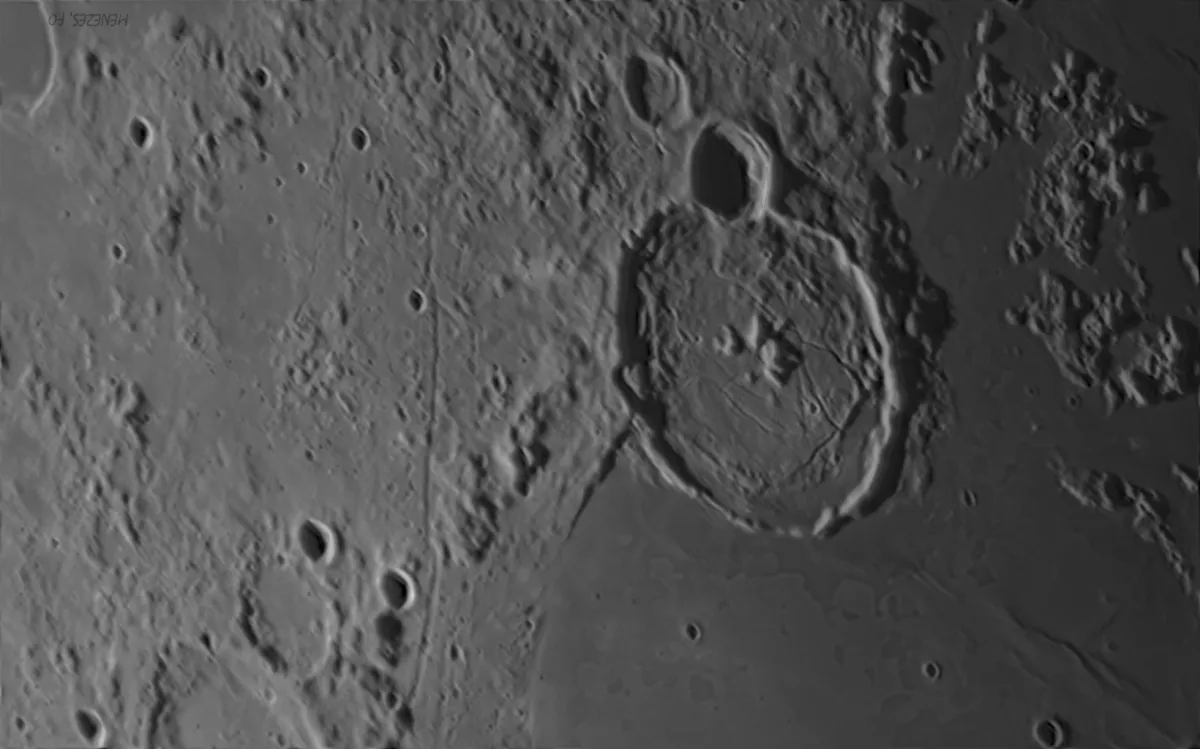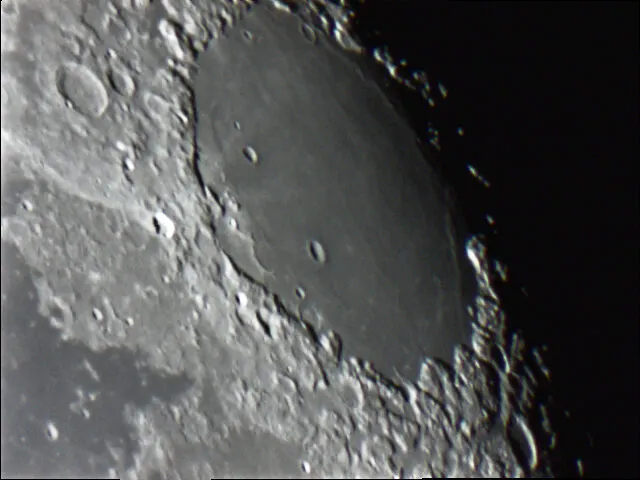In this guide we'll look at some of the best features to observe on the Moon, so if you've never taken the time to look at the Moon before, this is a great place to start.
The source of our ocean tides and the only other world that humankind has so far set foot upon, the Moon seems a familiar and tangible place.
A quarter of Earth’s diameter and just a quarter of a million miles away, The Moon is 100 times closer than Venus.
Given its proximity, brightness and large apparent size, it’s easy to see why the Moon has enchanted humankind for centuries: not least because until recently we have been unable to catch a glimpse of the far side of the Moon.
The Moon is also a fantastic target for astrophotography. If you're not sure where to start, read our guide on how to photograph the Moon.
More more lunar guides, find out how to see crater Clavius on the Moon, take a look at the clair-obscur effects and lunar valleys or discover the science behind a supermoon.

Pre-telescopic observers noticed an unchanging pattern of darker patches that would later become known as lunar maria, or ‘seas’, because they were assumed to be vast bodies of water.
They act as a Rorschach test for different cultures: the face of the ‘Man in the Moon’ observed in Western tradition, the ‘Rabbit’ pounding rice of East Asian folklore, or the ‘Lady Reading a Book’ from the southern hemisphere, to give just three examples.
The reason we see the same lunar features staring back at us is because the Moon has a synchronous rotation with respect to Earth, meaning that spins once on its axis in the same 27.3 days (the sidereal month) it takes to complete an orbit of our planet.

Observing the Moon
The Moon is the ideal place to begin your observing odyssey because it is big, bright and covered with amazing detail (for more on this, read our guide How to observe the Moon).
But the thing that surprises most novice observers is the variation it holds.
Though the same side of the Moon faces Earth at all times, what you see on the Moon changes from night to night (find out more about the lunar phases in our article Why does the Moon's appearance change?).
You may be forgiven for thinking that full Moon (such as during a supermoon or blue Moon) is the best time to examine our close companion – not so.
While this is a good time to see the long, bright rays of ejecta surrounding prominent craters such as Tycho, the high altitude of the Sun in the lunar sky means no shadows are cast, resulting in a washed-out view of the Moon.

In general, the best time to view features on the Moon is when the terminator, the demarcating line that separates lunar day and night, is nearby.
This is the region where the Sun is either rising or setting, where crater rims and mountain peaks stand out in stark relief, casting inky black shadows across the lunar surface that exaggerate their presence.
Those further from the terminator show hardly any shadows and are harder to make out.
Observing the Moon with the naked eye it’s easy to see the progression of lunar phases, full disc effects such as earthshine and the major lunar seas.

If you observe the Moon through binoculars it will increase the detail you’ll see: as well as dark seas, you’ll now be able to spot individual craters and large mountain ranges, especially close to the terminator.
The smallest craters you’ll be able to pick out will depend on how still you can hold your binoculars, but a pair of 7x50s should comfortably reveal features down to about 50km across.
A telescopic view of the Moon is amazing and one that never gets old. At low magnifications, the amount of detail visible is breath-taking, especially close tothe terminator where relief shadows really help to emphasise the detail.
Upping magnification by using shorter focal length eyepieces will get you in closer and give you opportunity to ‘roam’ around the lunar landscape.

Below are 10 of the best features to observe on the Moon. You can use our Moon map above to help you locate each of the features.
If you'd like to observe the regions where humans have walked on the lunar surface, read our guide on how to see all the Apollo landing sites on the Moon.
And if you want weekly moonrise times and lunar phases delivered directly to your email inbox, sign up to the BBC Sky at Night Magazine e-newsletter.
10 best features to see on the Moon
Hadley Rille

Equipment needed: Large telescope
Famous as one of the features explored by the Apollo 15 astronauts, Hadley Rille is also a great target to look for with a large telescope.
Under suitable illumination it appears as a little meandering black line near the northern end of the lunar Apennines.
Crater Grimaldi

Equipment needed: Binoculars
Visible to the naked eye, the dark, 173km-wide basin known as Crater Grimaldi reveals lots of detail through binoculars and telescopes, including eroded walls, ridges and low hills.
Crater Copernicus

Equipment needed: Small telescope
At the heart of a huge system of bright rays that spread for hundreds of kilometres, Crater Copernicus is a 93km-wide crater with a distinctive terraced rim.
Crater Plato

Equipment needed: Small telescope
This beautiful 109km-wide crater lies nestled among the jagged landscape near the northern edge of the Mare Imbrium. It hasa smooth floor and is surrounded by interesting features, including Rima Plato and the Montes Teneriffe.
Lunar Apennines

Equipment needed: Small telescope
The Apennines mountain range stretches over 900km across the lunar surface. It is particularly striking when lit from the side – when the peaks cast huge, inky black shadows onto the surrounding landscape.
Vallis Alpes

Equipment needed: Small telescope
Cutting through the lunar Alps, the 130km-long Vallis Alpes is one ofthe most interesting features on the Moon’s surface. This valley canbe spotted with even a small telescope.
Crater Gassendi

Equipment needed: Small telescope
A fascinating 110km crater on thenorthern edge of the Mare Humorum. Under the right light, you’ll be able to see a superb network of rilles on its floor.
Rupes Recta

Equipment needed: Small telescope
Best known as the Straight Wall, this 110km-long fault reaches over 270m above the lunar surface. Look for a thin black line near to crater Birt.
Mare Crisium

Equipment needed: Binoculars
The 620x570km lunar sea known as Mare Crisium is one of the most distinctive features on the Moon. Located close to the eastern limb, it’s clearly visible to the naked eye as a dark oval patch. Unlike the other seas, the Mare Crisium is completely detached. Its dark, smooth-looking floor has a higher boundary that shows fantastic shadows as the terminator approaches and crosses the sea.
Craters Ptolemaeus, Alphonsus and Arzachel

Equipment needed Small telescope
These three imposing craters sit close to the centre of the Moon’s near side. The largest of them, Ptolemaeus, has a smooth floor that is pockmarked with lots more tiny craters.
What are do you think are the best features to observe on the Moon? Have you managed to captured any photos of them? Get in touch with us by emailing contactus@skyatnightmagazine.com or via Facebook, Twitter and Instagram.